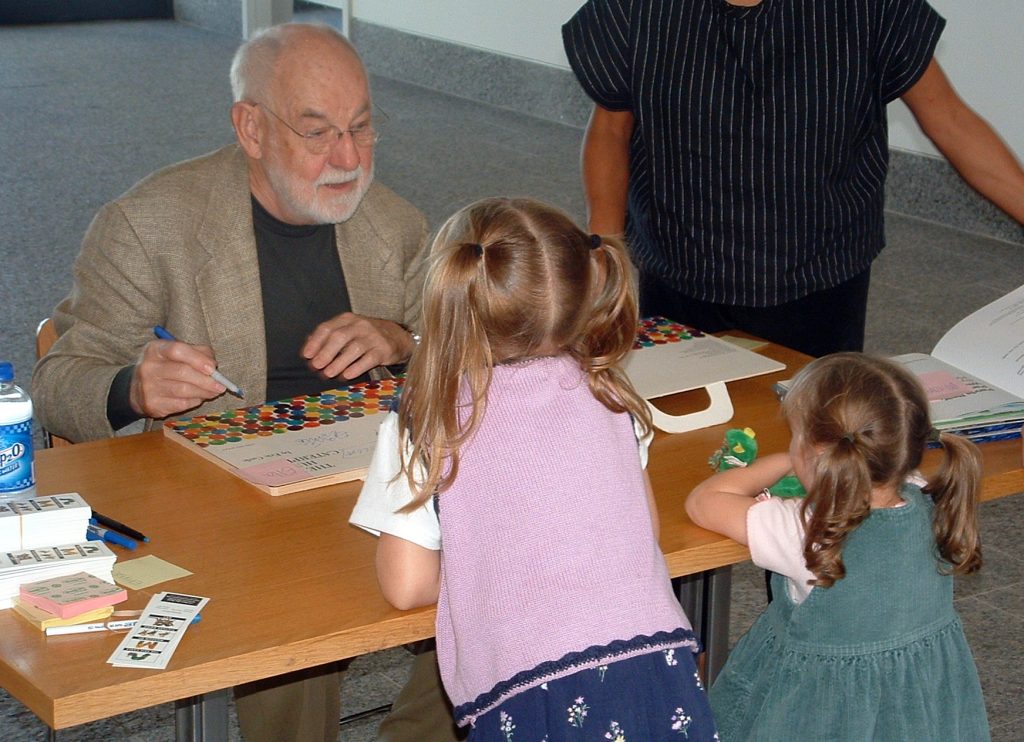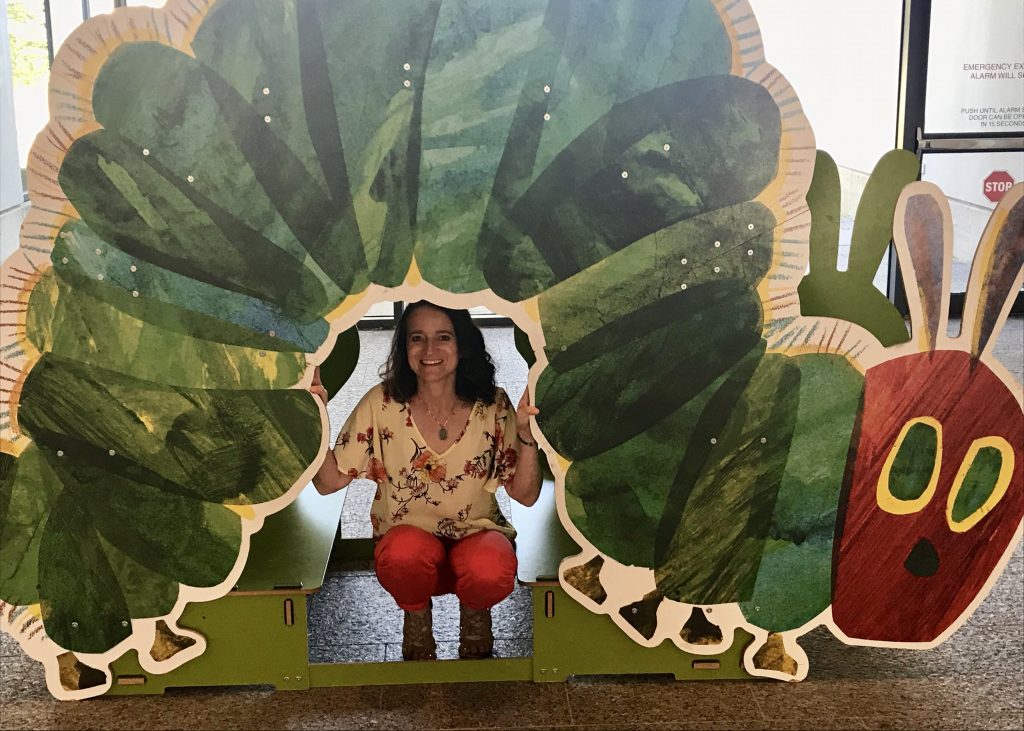Caterpillar, Butterfly
Have you ever wondered how a caterpillar becomes a beautiful butterfly? Join us as we dive deep into the world of the very hungry caterpillar. Below are activities that all have a Caterpillar, Butterfly theme. These activities include things that will help your child develop fine and gross motor skills, problem-solving and engineering skills, and can help them engage in cooperative play, while fostering creativity and perseverance. Each theme also comes with recommended literature connections. Feel free to throw in your own activities that might relate, and don’t forget to post your results to social media and tag @discoverymuse to share with everyone else!

Before we begin, let’s all spend a few minutes with Eric Carle’s classic picture book The Very Hungry Caterpillar. See if you can figure out the life cycle stages of the caterpillar. What kinds of foods did he eat? Are any of the foods in the book foods that you would like to eat? Which ones? Why?
- Listen to Eric Carle read aloud his own Very Hungry Caterpillar.
- Watch the short animated film of The Very Hungry Caterpillar.
Art Activity/Fine Motor Activity: Create your Very Own Very Hungry Caterpillar Headband
For this activity, you will need:
- Red strip (rectangle) for headband
- 2 purple antennae
- 2 big yellow circles
- 2 small green circles
- Glue sticks
- Stapler
- Scissors
- Crayon, Pencil, or Pen
- Sentence strip (a long strip from a brown paper bag cut to fit around the child’s head works well too).
Instructions:
- Draw the shapes you need and cut them out.
- Glue the green circles to the yellow circles. These will be the eyes.
- Glue the eyes to the red headband.
- Glue the purple antennae inside the red headband above the eyes.
- Staple the red headband to the white sentence strip (or paper bag strip), then staple the strip to fit the child’s head.
- Have a very happy, very hungry day!

For more fun art projects, visit the Eric Carle Museum website. They have a wonderful activity called Tear Rip Shred Create, which is designed for fine motor ripping, categorizing paper by type and color, and creating anything you want to with the results
Science Activities — Life Cycles
Take a deeper look with PBS at why the caterpillar is so hungry. This is a great introduction to the life cycle of the butterfly, with gorgeous video images.
Science Activity: Can you sort the life cycle stages of the very hungry caterpillar?
Instructions:
Can you sort the pasta shapes into the life cycle of the very hungry caterpillar? You will help our friend move from egg to caterpillar to chrysalis to butterfly!
For this activity, you will need:
- Dried pasta (or other household items) to be the different stages of the hungry caterpillar’s life cycle. We suggest shell pasta for the egg, rotini for the caterpillar, rigatoni for the chrysalis, and farfalle for the butterfly.
- Not everyone has all these kinds of pasta in the house. What else could we use to be the different stages of the caterpillar’s life? Could you use beans for the egg? Maybe make your caterpillar out of playdough or a pipe cleaner? Could you make your chrysalis from an eraser or a cotton ball? What could you use to make a butterfly? Use your imagination (and share your creative ideas with us)!
- Use the pictures below to organize your objects so that your caterpillar moves through the life cycle stages!
Join the Shenandoah Valley Discovery Museum as we raise painted lady butterflies from caterpillars in this 21 Day Butterfly Project. Follow their path through the life cycle from caterpillar to chrysalis to butterfly — and then to egg again!
Physical Activity: Feed the Very Hungry Caterpillar
Get some of those wiggles out while learning a little about the very hungry caterpillar — and the many types of foods it ate.
To Prepare: Make your very own Very Hungry Caterpillar.
- To make ours, we took two box lids.
- One one box lid, we painted and/or cut out simple shapes to create our hungry caterpillar face (1 big red circle for the face, 2 purple ovals for the antennae, 2 big yellow ovals for the eyes, 2 smaller green circles for the pupils in the eyes, 1 green triangle for the nose, and a skinny black circle around the hole you cut out for the mouth.
- Get a grown up to help you cut out the big circle in the center for the mouth.
- The other box lid is used as a tray to support your caterpillar head and catch your food.
- If you don’t have boxes, you can also make one out of poster board or even a paper bag.
- You will also need pretend food to feed the caterpillar. You can use plastic food from a play kitchen. You can also cut out pictures of different foods and glue or tape them to balls. Go with what you have.
Instructions:
Using a gentle underhand toss, how many red, orange, yellow, blue, purple, and green foods can you feed the hungry caterpillar?
Literature Connections and Read Alouds
Because we know you’re stuck at home with limited access to books, we tried to compile a list that connects to today’s theme that you might already have in your collection or be able to access online. Some extra read aloud ideas include:
- From Caterpillar to Butterfly by Deborah Heiligman, illustrated by Bari Weissman
- The Very Impatient Caterpillar by Ross Burach
- Pete the Cat and the Cool Caterpillar by James Dean
For Further Research: Maria Merian
For those who want to go deeper, take a dive into the life of naturalist Maria Merian, a naturalist who studied butterflies and documented metamorphosis. She is considered one of the most significant entomologists (scientists who studied insects), even though she lived more than 300 years ago!
Lots of upper elementary art and science activities about Maria Merian are available from the NEA.


